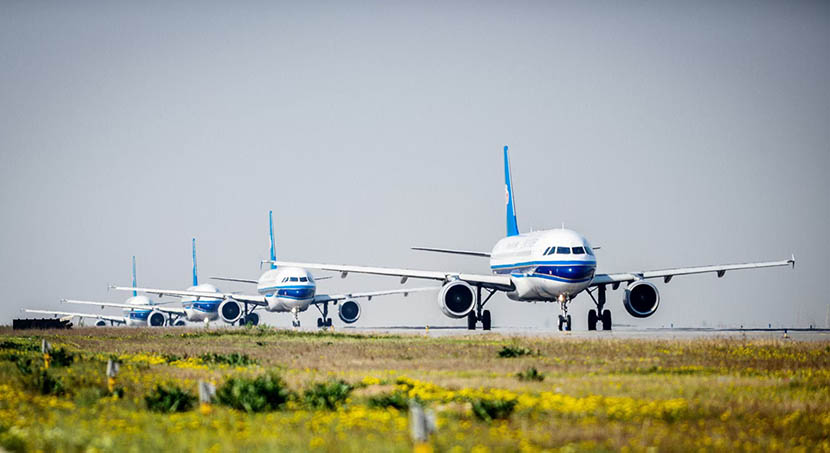Thursday, April 18, 2024

Non-stop flights offer numerous advantages over connecting flights, including shorter travel times, reduced risk of luggage loss, less hassle of going through multiple security checks, and a significant reduction in the fatigue associated with long hours spent at connecting airports. These flights are especially appealing to business travelers who value time efficiency and tourists who wish to maximize their time at their destinations.
New York to Bangalore (Air India)
Reflecting the growing economic ties between the United States and India, Air India has launched a non-stop service from New York’s JFK Airport to Bangalore. This route caters to the large number of tech professionals and business travelers moving between these major tech hubs, as well as tourists exploring the rich cultural tapestry of southern India.
Los Angeles to Singapore (Singapore Airlines)
Singapore Airlines has resumed its non-stop service between Los Angeles and Singapore, one of the longest non-stop flights in the world. The route covers over 8,700 miles, showcasing the capabilities of modern aircraft like the Airbus A350-900ULR, designed for ultra-long-range flights.
London to Perth (Qantas)
Qantas operates one of the most ambitious non-stop routes with its direct flight from London to Perth. This 17-hour flight is the first direct air link between Europe and Australia, made possible by the Boeing 787 Dreamliner, which is optimized for both comfort and efficiency over long distances.
San Francisco to Bengaluru (United Airlines)
United Airlines has started a new direct route from San Francisco to Bengaluru, another testament to the growing connection between the U.S. tech industry and its Indian counterpart. This route is United’s first direct flight to southern India and is aimed at tech professionals traveling for business between these two tech-forward cities.
Doha to Auckland (Qatar Airways)
Qatar Airways continues to operate one of the world’s longest commercial flights, a non-stop journey from Doha to Auckland. This nearly 18-hour flight covers a distance of about 9,032 miles, linking the Middle East to New Zealand, providing a vital connection that supports both tourism and business engagements.Economic and Environmental Impact
The economic impact of these non-stop flights is considerable. They not only provide significant revenue streams for the airlines but also contribute to the economic development of the connected cities by boosting tourism and facilitating business interactions. However, there are environmental concerns associated with long-haul flights, particularly regarding their carbon footprint. Airlines are addressing these concerns by investing in more fuel-efficient aircraft and exploring sustainable aviation fuels.
Technological Advancements
The expansion of non-stop flights is largely enabled by advances in aviation technology. Newer aircraft models like the Airbus A350 and Boeing 787 Dreamliner are specifically designed to handle long-haul flights with better fuel efficiency and passenger comfort. These airplanes are equipped with features that reduce jet lag, such as advanced cabin pressurization and humidity control systems, making ultra-long-haul travel more bearable.
Future Trends
Looking ahead, the trend towards more non-stop flights is likely to continue as airlines strive to capture the demand for more efficient and comfortable travel options. Experts predict that as aircraft technology advances, even longer non-stop flights will become feasible. Moreover, the success of current routes may encourage airlines to open new direct connections to less commonly served destinations, broadening the global travel network.
Challenges
Despite the advantages, there are challenges to operating non-stop routes, especially ultra-long-haul flights. These include higher operational costs, the physical and mental health impacts on passengers and crew during extremely long flights, and the aforementioned environmental concerns. Airlines must balance these challenges with the benefits as they plan their route strategies.
Customer Experience Enhancements
To make these long flights more appealing, airlines are continually enhancing the passenger experience. Premium seating options that allow for better rest, high-quality onboard meals, and in-flight entertainment systems are just some of the areas where airlines are focusing their efforts. Additionally, many airlines are enhancing their digital offerings, providing more options for passengers to customize their travel experience via apps and websites.
The expansion of non-stop flight routes across the globe marks a significant evolution in air travel. These routes not only symbolize the progress in aviation technology but also reflect the growing interconnectivity of our world. As we move forward, the ability of airlines to balance efficiency, comfort, and sustainability will determine the future landscape of international air travel, making the globe more accessible than ever.
Tags: airlines, Non-stop flights
Wednesday, May 1, 2024
Wednesday, May 1, 2024